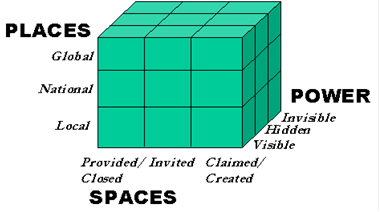Analysing power
I am currently preparing an advocacy training for a group of CSO grantees of the EU’s Peacebuilding Initiative in Israel and the Occupied Palestinian Territories. The CSOs are diverse in their organisational type, size, and field of expertise and include think tanks; research institutes; development NGOs, both international and local; youth organisations; as well as specialist peacebuilders. Common to all the training participants is the ambition to make the step change from locally focused action (whether service delivery, research, mediation, or even local-level advocacy), whose potential for stimulating change is limited to a particular location or target community, to policy influencing activity at the national level, which might feasibly lead to wider positive impact and sustainable change in the lives of the greater majority of people of the region.
Central to successful advocacy is the targeting of key decision makers and those possessing power over social and political resources, by arguing the case for change and bringing peaceful pressure to bear in concert with allies and supporters. It goes without saying that understanding how power is exercised and knowing what kind of strategy power holders are most likely to respond to is essential for success. Very often power is conceived as one of ‘power over’, ‘power to’, ‘power with,’ and ‘power within.’ While these concepts are undoubtedly helpful for identifying those whom one needs to influence – that is those who have power over people and resources -, as well as defining likely partners in an advocacy coalition or network – that is those whom one has power with -, they are insufficient for developing the in-depth understanding of power necessary to design a policy influencing strategy with potential for results..
A tool that I always use when facilitating the design of advocacy strategy or delivering trainings in policy influencing is Gaventa’s Power Cube (so called after John Gaventa from the Institute of Development Studies, who developed the concept in the early 2000s).

The cube provides a neat and easily understandable guide to analysis of the different facets of power and its exercise in any given situation. As I have been preparing the current training I have been in search of further resources on, and examples of power analysis and stumbled upon (having once forgotten about it) the following: a site dedicated to the power cube and everything concerning power analysis that was developed and established in 2009 by Power, Participation and Social Change (PPSC) group at the Institute of Development Studies. Having rediscovered this varied, fascinating, and extensive resource, it will be one of my first ports of call when preparing any work involving policy influencing or necessitating power analysis.
